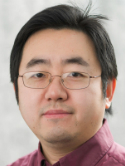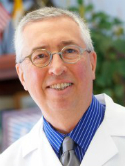Brentuximab vedotin and AVD followed by involved-site radiotherapy in early stage, unfavorable risk Hodgkin lymphoma Journal Article
| Authors: | Kumar, A.; Casulo, C.; Yahalom, J.; Schöder, H.; Barr, P. M.; Caron, P.; Chiu, A.; Constine, L. S.; Drullinsky, P.; Friedberg, J. W.; Gerecitano, J. F.; Hamilton, A.; Hamlin, P. A.; Horwitz, S. M.; Jacob, A. G.; Matasar, M. J.; McArthur, G. N.; McCall, S. J.; Moskowitz, A. J.; Noy, A.; Palomba, M. L.; Portlock, C. S.; Straus, D. J.; Vander Els, N.; Verwys, S. L.; Yang, J.; Younes, A.; Zelenetz, A. D.; Zhang, Z.; Moskowitz, C. H. |
| Article Title: | Brentuximab vedotin and AVD followed by involved-site radiotherapy in early stage, unfavorable risk Hodgkin lymphoma |
| Abstract: | This multicenter pilot study assessed the safety and efficacy of brentuximab vedotin (BV) and AVD (adriamycin, vinblastine, and dacarbazine) followed by 30 Gy involved site radiation therapy (ISRT). Patients with newly diagnosed, early stage classical Hodgkin lymphoma (HL) with unfavorable-risk features were treated with 4 cycles of BV and AVD. Patients who achieved a negative positron emission tomography (PET) scan (Deauville score of 1-3) received 30 Gy ISRT. Thirty patients received treatment and were assessable for toxicity. Twenty-nine patients completed 4 cycles of BV + AVD, and 25 patients BV + AVD + 30 Gy ISRT. No clinically significant noninfectious pneumonitis was observed. Serious adverse events(≥grade 3) were reported in 4 patients, including febrile neutropenia, peripheral neuropathy, and hypertension. After 2 and 4 cycles of BV + AVD, 90%(26 of 29) and 93%(27 or 29) of patients achieved a negative PET scan, respectively. Two patients with biopsy-proven primary refractory HL were treated off-study. All 25 patients who completed BV + AVD + ISRT achieved a complete response. With a median follow-up of 18.8 months, by intent to treat, the 1-year progression-free survival is 93.3% (95% confidence interval, 84-102). Overall, the treatment was well-tolerated with no evidence of significant pulmonary toxicity. The majority of patients (≥90%) achieved negative interim PET scans after 2 and 4 cycles of BV + AVD. Excludingthe 2 primary refractory patients, all patients are disease free, suggesting that this is a highly active treatment program even in patients with substantial disease bulk. © 2016 by The American Society of Hematology. |
| Journal Title: | Blood |
| Volume: | 128 |
| Issue: | 11 |
| ISSN: | 0006-4971 |
| Publisher: | American Society of Hematology |
| Date Published: | 2016-09-15 |
| Start Page: | 1458 |
| End Page: | 1464 |
| Language: | English |
| DOI: | 10.1182/blood-2016-03-703470 |
| PROVIDER: | scopus |
| PUBMED: | 27458003 |
| PMCID: | PMC5025897 |
| DOI/URL: | |
| Notes: | Article -- Export Date: 3 October 2016 -- Source: Scopus |
Altmetric
Citation Impact
BMJ Impact Analytics
MSK Authors
Related MSK Work


























